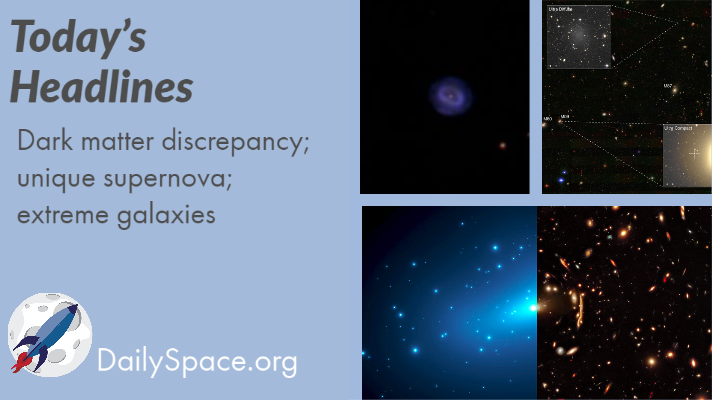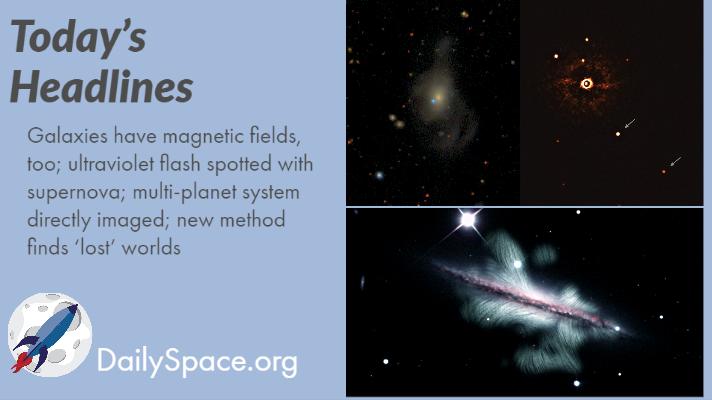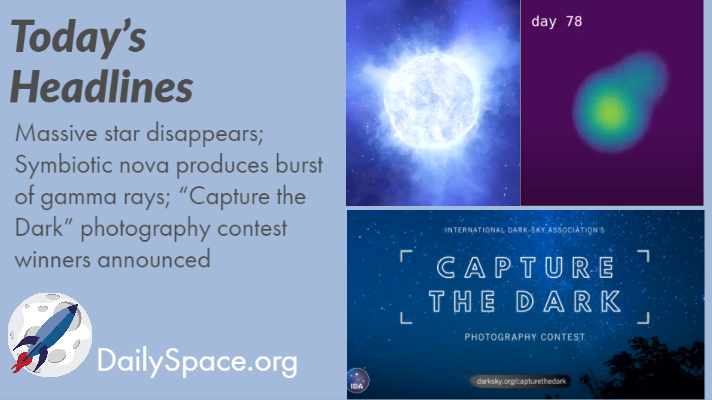
Nov 24, 2020 | Astrobiology, Crewed Space, Daily Space, Fast Radio Bursts, Jupiter, Milky Way, Spacecraft, SpaceX, Supernovae
Two new research papers examine how the Milky Way galaxy was formed and how it evolved. Plus, we take a look at stories on the prospects for life elsewhere in the cosmos and on fast radio bursts and supernovae. Finally, just what was the zero-gravity indicator aboard the Crew-1 Dragon?

Oct 6, 2020 | Cosmology, Daily Space, Exoplanets, Galaxies, Quasar, Supernovae
Using huge telescopes, researchers have discovered a Large Scale Structure of six galaxies around a seventh galaxy with a supermassive black hole, back in the first billion years of the Universe. Plus Hubble captures a time-lapse of a fading supernova and beta Pictoris c is directly imaged.

Sep 15, 2020 | Cosmology, Daily Space, Dark Matter, Galaxies, Guest Interview, Supernovae
Join us today as we look at how the Hubble Telescope may have solved the dark matter discrepancy. A research team has found a unique Type 1a supernova in the super-Chandrasekhar group of novae. Plus, all those extreme galaxies (large and small) seem to be in dense regions with a lot of interactions. Afterward, were joined by astrobiologist Dr. David Grinspoon to talk about his research into potential life on Venus.

Aug 20, 2020 | Asteroids, Citizen Science, Daily Space, Earth, JAXA, Supernovae
Join us today as we look at how citizen science helped discover 100 cool worlds nearby. Then we examine evidence that exploding stars may have contributed to a mass extinction on Earth. Speaking of mass extinctions, an asteroid narrowly missed our planet last weekend. Because 2020.

Jul 23, 2020 | Daily Space, Exoplanets, Galaxies, Supernovae, Very Large Array, White Dwarfs
Join us today as we learn that galaxies have magnetic fields, too. Also, scientists are excited to catch the ultraviolet flash of a type Ia supernova and directly image a multi-planet extrasolar system. Finally, researchers have developed a new method for finding “lost” worlds in NASA TESS data (but no dinosaurs, thankfully).

Jun 30, 2020 | Daily Space, Stars, Supernovae
Join us today for our top story: a massive star has disappeared, probably due to dust but maybe not. Also, we explain how a symbiotic nova occurs and produces gamma rays. Finally, we are pleased to share some of the winners and runners up in the “Capture the Dark” photography contest from the International Dark Sky Association.








 We record most shows live, on Twitch. Follow us today to get alerts when we go live.
We record most shows live, on Twitch. Follow us today to get alerts when we go live.